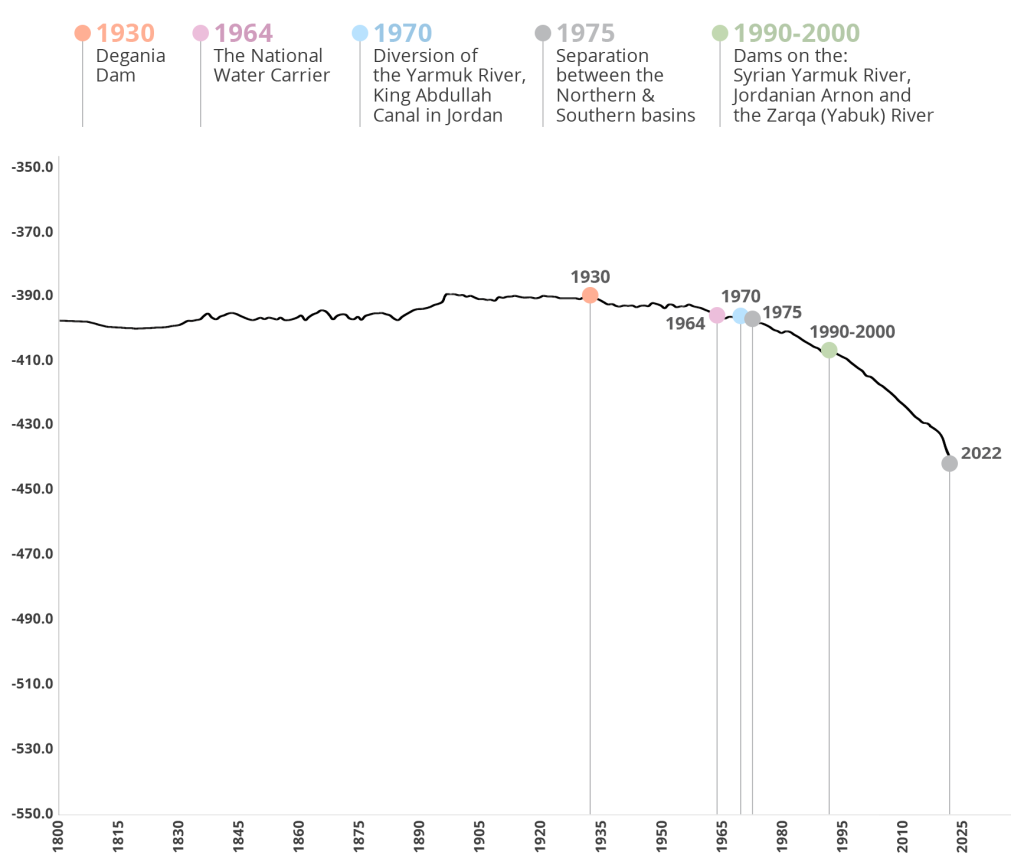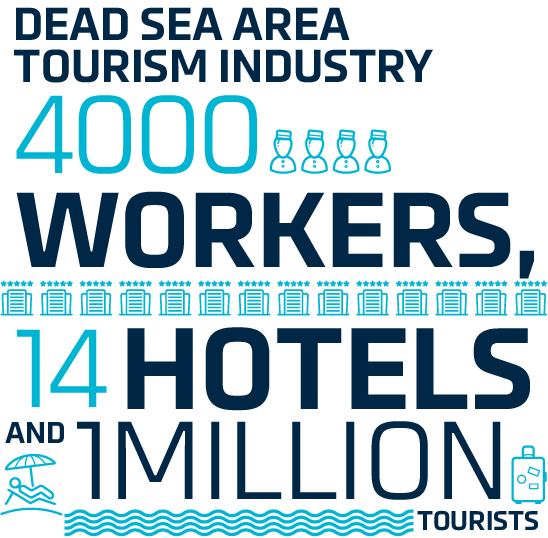Since the construction of Israel’s National Water Carrier in the 1960’s, the quantity of water entering the Dead Sea has decreased significantly. This decrease is primarily due to increased utilization of the Jordan River’s water and its water sources by Israel, Jordan, Lebanon, and Syria, mainly for domestic and agricultural purposes. About 50 dams have been constructed in various drainage basins in Jordan and in Syria, to utilize the water of rivers and streams that used to feed the Dead Sea. Reservoirs, which are designed to capture flood water for human usage, have also been constructed in the Arava region’s drainage basin area. However, the result of the significant decrease of the inflowing quantity, has accelerated the decrease of the Dead Sea’s water level over the last three decades.
The extraction of minerals by ICL Dead Sea is made possible through a process of natural water evaporation carried out in the evaporation ponds in the southern basin. While other factors prevent the flow of water upstream before reaching the northern basin, ICL Dead Sea pumps water from the northern basin and channels it into the southern basin that contains the ICL Dead Sea solar ponds. Minerals and various raw materials are then extracted in the evaporation ponds, including potash, magnesium, bromine, and sodium chloride. Potash is a critical and essential material for global agriculture, and for ensuring the food security of the world’s growing population.
The mineral extraction and production process used by ICL Dead Sea, is among the most efficient in the world, thanks to the combination of high concentrations of minerals in the water, the natural evaporation process based on solar energy and the unique know-how accumulated by the Company. The evaporation process provides a significant share of the energy required for extracting minerals, and therefore ICL Dead Sea’s extraction process consumes less fossil fuels in comparison to similar industries around the world. Thus, ICL Dead Sea benefits both from a competitive advantage and from the advantage stemming from lower GHG emission levels as compared with other extraction processes.







